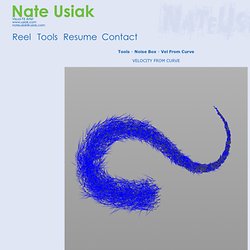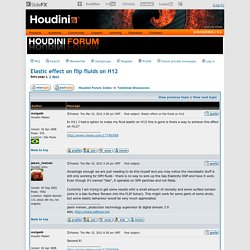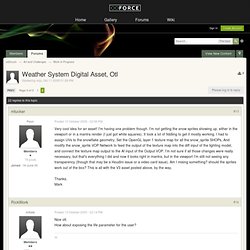

Recreating ICE's "Modulate by Null" Hey thanks guys.

Yeah, learning Houdini definitely is a process for sure, but at least the experience with ICE is a solid primer for understanding key concepts. I think my eventual goal in all of this is not to translate Softimage into a Houdini environment, but rather, to look beyond both packages to the raw math that drives everything, and then just build some tools to manipulate the math. Yes, Houdini does some things differently than SI, but at least there are hardly any barriers to cleanly manipulating the data. I mean, just that fact that you can write inline VEX code to create a custom VOP without resorting to externally compiled c++ is pretty enticing (I am not a coder, so both of these could very well be a stretch for me!) I'll be the first to admit that it took me a painfully long time to really understand how ICE worked. My eyes are starting to bleed from watching so many tutorials, but things are starting to make sense.
It's like learning a musical instrument - it takes time. Nate Usiak - Tools. Tools - Noise Box - Vel From Curve This tool is designed to take an input curve and basically add a cylindrical area of velocities around it to be used in many types of simulations to allow for more brute force control.

The tool has many controls on it to allow the artist a range of manipulation. It has a ramp that controls the thickness of the tube of velocities around the curve. Also a ramp to control the scale of the velocities from the start to the end of the curve. A parameter to scale the overall velocity and also controls to add noise. I also put together a quick guide showing one of the ways to impliment this tool in a Pyro simulation: Elastic effect on flip fluids on H12. That setup looks good for strain.

The only big thing missing is the strain isn't being rotated by the velocity field. So if you have a blob that is stretched in X, then rotated 90 degrees, it will still try to restore along the X axis. Gas Velocity Stretch is supposed to fix this, but it is a pretty subtle thing. It's also a bit not-FLIP like because you are keeping a field from frame to frame. A proper FLIP approach would be to store the strain attribute on the particles and rebuild it from there. As for things not properly seizing up with large viscosities... Ship Kelvin Wake. Procedural stones/rocks - Modeling. Jwoelper, what a beautiful, procedural stone!

I like it and thanks to share. Anyway, if I can suggest you something, it would be: 1. When creating parameter in VOP node, give them a yellow color in order to recognize them quickly: I see pros do it, so why don't we too? It's enough you click 'C' key on your keyboard and choose the third yellow from the right (if you don't know how do it! ) 2. Is there a way to sort points in clockwise or CCW order? Weather System Digital Asset, Otl - Page 2 - Work in Progress - od. Vrljc, on Oct 15 2005, 02:51 PM, said: Here is Weather SOP v4.I added in the life expectency and life variance attributes.

Added in a meta option for the rain so you can have either metaball or primitive sphere rain droplets. I also worked on the Bake feature, but I am still having issues with this though. Here is what is happening:After I set the location of the baked out particles, I hit the bake button and nothing happens. To get the bake button to work, I have to enter inside the Weather Sop, and click on the geometry ROP to select it. I don't know what the proper solution to this problem but I had the same thing happen to me with I made a rendertools otl.
If I were to link my button to the mantra1 ROP's execute parameter (instead of calling opparm), I would experience exactly what you have, where you have to dive into the network and select the ROP.